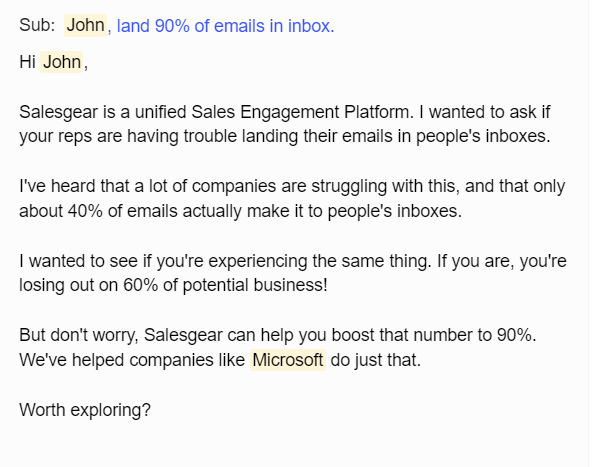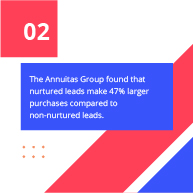Do you keep hearing these when you think about outbound sales strategy?
- Outbound sales is time-consuming.
- Outbound sales is expensive.
- Outbound sales is challenging.
- Outbound sales is dying
These may be true (but not the last one). Why?
It’s because a well-executed ‘outbound sales strategy’ fuels business growth, and generates leads. It enables you to expand your customer base, penetrate new markets, and increase revenue streams.
Let’s explore outbound sales, uncover its essence, benefits, and how to set up effective outbound sales strategies.
What is Outbound Sales?
It’s the process of proactively reaching out to potential customers to generate leads. The channels used in outbound sales are – phone calls, emails, social media, and even face-to-face meetings.
Outbound sales allow you to take control of your sales efforts and directly engage with the target audience. It enables sales professionals to tailor their messaging to address the unique pain points and requirements of each prospect.
In case you’re wondering how is it different from inbound sales, then this- Inbound Vs outbound sales: A comparative analysis– is for you.
How to build an outbound sales strategy?
You need careful planning and execution. Put solid work upfront before you start reaching out to potential customers.
Here are some steps involved in building a strong strategy-
Identify the market
The first step is to delineate the specific segment of the market that aligns with your product or service.
It helps you in understanding your buyer persona, their needs, pain points, and buying behavior. This helps in tailoring your approach while reaching out.
Imagine you are a fitness brand that produces fitness bands. The ideal market for you to target would be to research the market with a need for your product, ie, a market with a high obesity rate, and segment your customers by age or a profession that allows minimum physical exercises.
Develop an ICP
Create a comprehensive description of your perfect customer, considering various factors such as company size, industry, region, and job titles.
A well-defined ICP minimizes resource wastage by steering clear of leads that are unlikely to convert.
This alignment between your product or service and the characteristics of your ideal customers potentially increases the success of your outbound sales efforts.
Reach out channels
Selecting channels for outreach could be tricky. It’s because, typically, the first touchpoint happens through them.
Social media selling involves channels like LinkedIn and Twitter to engage with prospects. It allows you to build relationships, share relevant content, and initiate conversations in a more informal manner.
Cold calling remains a direct and personal approach. It provides an immediate opportunity for direct interaction, enabling real-time conversation and addressing questions or concerns on the spot.
Cold emails are structured outreach messages sent to potential customers. These emails should be well-crafted, personalized, and focused on the recipient’s needs.
Opting for a combination of these channels can yield optimal results. By diversifying your approach, you increase your chances of reaching prospects through their preferred communication medium.
Craft a compelling value proposition
This captures the attention and interest of your target audience during outbound sales efforts. Tailor your message to address the specific pain points and challenges of your target audience.
A value proposition should speak directly to the pain points of the sales team and how your tool can help them. By personalizing your value proposition to resonate with the specific needs and challenges of your target audience, you demonstrate that you understand their concerns and have a tailor-made solution.
An example-

Measure, Iterate, and Refine
Regular analysis of your strategy’s performance through key metrics provides valuable insights into what’s working and what needs improvement. Keep an eye on industry shifts, emerging technologies, etc. to adapt your strategy.
The most successful outbound sales strategies are not set in stone. They’re adaptable and evolving. This constant fine-tuning enhances your strategy’s effectiveness over time.
Bets sales strategies to level up your outbound sales game
Nurture leads with a multi-touch approach

The key to successful lead nurturing is to engage with prospects at different stages of their buyer’s journey.
For example, you can start with an initial email introducing your product or service, followed by a phone call to address any questions or concerns. Subsequently, you might send them relevant industry articles or case studies via email, and then reach out on social media with personalized messages.
Stand out from the Crowd
With a personalized approach, you can stand out from the slumps of emails your prospects receive. A study by Infosys suggests that personalization has influenced 86% of customers’ purchase decisions.

Personalization is an outbound sales strategy that involves crafting customized messages tailored to each prospect’s individual needs, challenges, and goals. Personalization creates a more meaningful and engaging connection with prospects. Personalized outreach was found to deliver tangible results.
Don’t Ignore Social Selling
Do you know? 1 out of 4 purchases today happens because of social media and one can’t avoid it. Social selling is a powerful strategy to enhance your sales efforts.

LinkedIn has been one of the most used platforms for Social selling in the recent past. You can connect with your target audience, send a simple introduction of yourself and your company and share the relevant content with potential buyers.
Social selling has been the buzzword for a couple of reasons:
1. The people you get connected with stay connected even if they don’t buy from you now. Making them a potential customer for always.
2. They get to see the content you share on your page, which will make you an industry expert among your buyers.
Remember, it’s important to strike a balance between sharing valuable content and engaging with prospects directly.
Sales Automation Tools
These have become a necessity rather than a luxury nowadays. They leverage technology to streamline and optimize various aspects of the sales process, resulting in improved efficiency, productivity, and overall performance.
You gain a competitive edge, drive sales growth, and achieve greater success in today’s dynamic business landscape. They-
1. Streamline your Emails: Automation tools allow you to streamline the emails you want to send to your prospects by automating the scheduling of the emails, follow-ups, and tasks. It ensures consistent and timely communication with your prospects, reducing the risk of leads falling through the cracks.
2. Improve Sales Productivity: With automation tools handling repetitive tasks, sales reps can spend more time on high-value activities, such as personalizing outreach, conducting meaningful conversations, and addressing specific pain points.
3. Scale with Quality: With an automation tool in place, you can scale your email campaigns at ease without giving up on quality resulting in a more efficient and effective outbound sales operation.
Suggested Read: Top 10 SDR tools to boost your productivity
Leverage Videos
Using a video to introduce yourself or demonstrate a product is one of the best outbound sales strategies I have ever come across. It works because you are putting a face to an email address.
Using video in your outreach creates a lasting impression on your prospects. It shows that you’re willing to go the extra mile and invest in innovative methods to engage with them.
Incorporating video in your outreach campaigns has been shown to improve response rates. When done right, personalized videos can grab the attention of your prospects and elicit a response.
Social Proof
Sales is a combination of science and psychology. You need to psychologically influence your prospects to buy from you. One of the most popular psychological methods reps use in outbound sales is Providing Social Proof.
Share customer testimonials, case studies, or success stories to build trust and demonstrate the value of your product or service. When potential customers see that others have had a positive experience, it increases their confidence and trust in the brand, making them more likely to make a purchase.
Motivate Customers to Refer Your Business
Referral and word-of-mouth marketing is still a relevant outbound sales strategy, don’t anyone let you tell otherwise. Leverage your satisfied customers’ network to generate new leads and convert them.
Offer incentives or rewards to motivate customers to refer your business. These could include discounts, exclusive offers, cash rewards, gift cards, or loyalty points. When someone receives a referral from a trusted source, they are more inclined to consider the recommended product or service, making the sales process smoother and more effective.

Regularly Refine Your Approach
The success rate of your outbound sales strategy highly depends on how regularly you refine your approach. Regular refinement allows you to optimize your sales processes and workflows. Analyze each step of your sales funnel, identify bottlenecks or inefficiencies, and implement improvements.
By regularly assessing the effectiveness of your sales pitch, presentations, and collateral materials, you can refine your messaging to resonate better with your target audience. This ensures that your value proposition is clear, compelling, and aligned with customer needs.
Final thoughts
It does take a lot of work to put a solid working outbound sales strategy in place. But when done right, it fuels your business growth like a rocket. Outbound sales strategies empower businesses to take control of their sales pipeline, engage with prospects directly, and build meaningful relationships.
By embracing the above 8 sales strategies, you can definitely change your outbound game for good, you can proactively generate leads, increase brand visibility, and drive revenue growth for your business. It is not an exhaustive list but is certainly effective.
